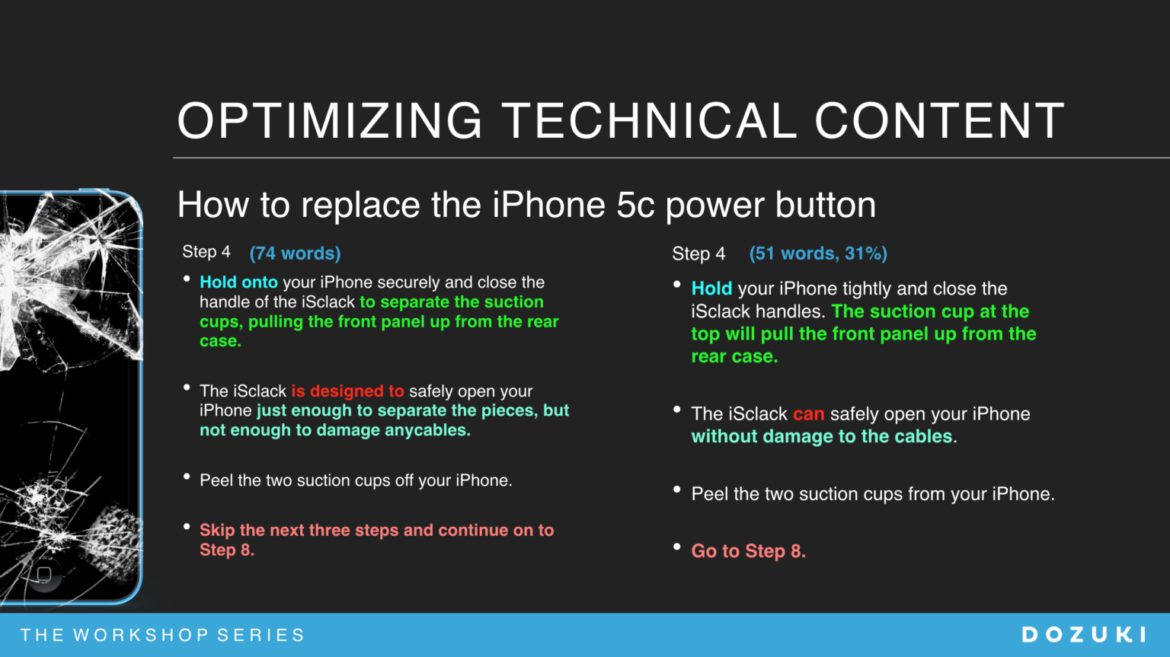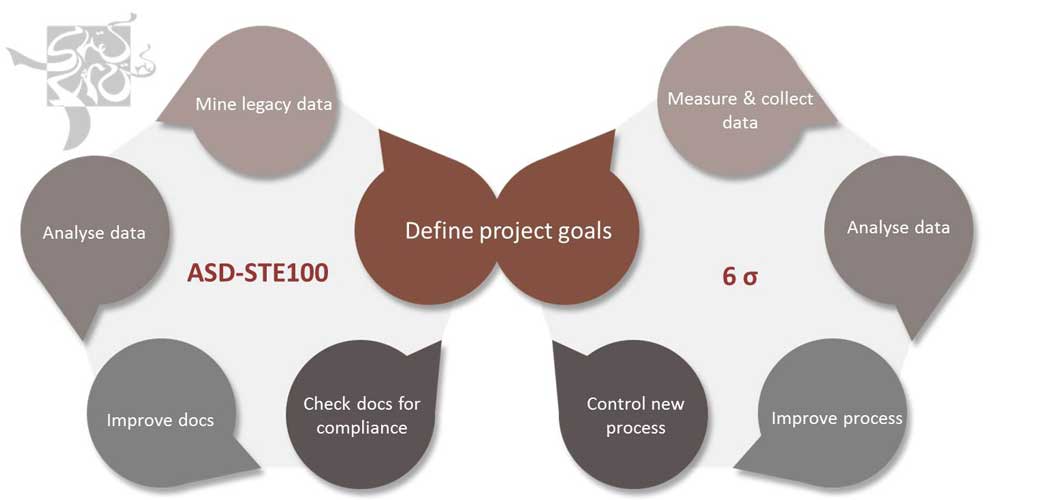Read Part 1 & 2 of our blog series here:
Dozuki Workshop Series – Optimize your technical content (Part 1 of 3)
Dozuki Workshop Series – Optimize your technical content (Part 2 of 3)
In this final installment of our three-part text analysis, we highlight areas for improvement, then provide the same information based on Simplified Technical English (STE) writing rules.
RULE: 5.1 Keep procedural sentences as short as possible (20 words maximum).
RULE: 9.2 When you combine words to make a phrase, make sure that each word continues to obey the meanings given to them in the Dictionary.
1a) Standard English:
Hold onto your iPhone securely and close the handle of the iSclack to separate the suction cups, pulling the front panel up from the rear case.
1b) STE:
Hold your iPhone tightly and close the iSclack handles. The suction cup at the top will pull the front panel up from the rear case.
Analysis:
In this rewrite, it is not necessary to create a phrasal verb such as ‘hold onto‘ to add emphasis to the verb ‘hold‘. Also, the objective of this step is to remove the front panel from the rear case. For this reason, we rephrased the sentence to clearly show which components need to be removed, using which tools. It is also recommended to write short, simple to understand sentences in procedural-type instructions.
RULE: 1.17 Make your instructions as specific as possible.
2a) Standard English:
The iSclack is designed to safely open your iPhone just enough to separate the pieces, but not enough to damage any cables.
2b) STE:
The iSclack can safely open your iPhone without damage to the cables.
Analysis:
In this rewrite, we reduced the number of words from 21 to 12. The Standard English sentence above seems rather excessive in trying to explain the use of the iSclack, when it is sufficient to say that the iSclack tool is safe to use, without going into unnecessary details, such as design.
RULE: 1.1 Only use approved words in the dictionary
3a) Standard English:
Skip the next three steps and continue on to Step 8.
3b) STE:
Go to Step 8.
Analysis:
‘Skip’ is an unapproved word in STE, and not quite useful in this context. Simply tell your reader which steps they need to complete next.
Missed this session? The on-demand presentation is now available below.
About the speaker
Since 2006, Ms Shumin Chen has been working as a consultant with customers in various industries worldwide: aerospace and defence, banking, consumer products, healthcare, IT, medical and fitness equipment. She has helped many companies with their documentation needs, based on standards where possible, and is widely regarded as a leading expert in ASD-STE100 Simplified Technical English training, aviation documentation and multilingual documentation.
Ms Chen now heads the ASD-STE100 training arm of Shufrans TechDocs. In her current role, Ms Chen continues to focus on the practical implementation of international standards to facilitate the efficient creation and management of multilingual documentation.
Copyright © 2016 Shufrans TechDocs. All rights reserved. No part of this article may be reproduced or transmitted in any form or by any means whatsoever without express written permission from the author, except in the case of brief quotations embodied in critical articles and reviews.






